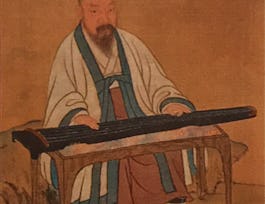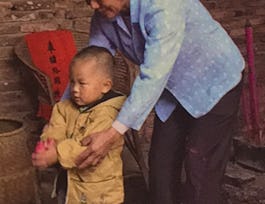This course follows the extraordinary development of Western Christianity from its early persecution under the Roman Empire in the third century to its global expansion with the Jesuits of the early modern world. We explore the dynamic and diverse character of a religion with an enormous cast characters. We will meet men and women who tell stories of faith as well as of violence, suppression, and division. Along the way, we encounter Perpetua and her martyrdom in Carthage; the struggles of Augustine the bishop in North Africa; the zeal of Celtic monks and missionaries; the viciousness of the Crusades; the visions of Brigit of Sweden; and the fracturing of Christianity by Martin Luther’s protest. We hear the voices of great theologians as well as of those branded heretics by the Church, a powerful reminder that the growth of Christianity is a story with many narratives of competing visions of reform and ideals, powerful critiques of corruption and venality, and exclusion of the vanquished. The troubled history of Christian engagement with Jews and Muslims is found in pogroms and expulsions, but also in the astonishing ways in which the culture of the West was transformed by Jewish and Islamic learning.



A Journey through Western Christianity: from Persecuted Faith to Global Religion (200 - 1650)

Instructor: Bruce Gordon
Sponsored by PTT Global Chemical
44,906 already enrolled
(664 reviews)
Skills you'll gain
Details to know

Add to your LinkedIn profile
11 assignments
See how employees at top companies are mastering in-demand skills


Earn a career certificate
Add this credential to your LinkedIn profile, resume, or CV
Share it on social media and in your performance review

There are 12 modules in this course
Learn what this course is about, who's teaching it, and other ways you can explore this topic. Meet and greet your peers as well!
What's included
1 video4 readings1 discussion prompt
“From Persecution to Empire,” explores the interaction between the second-century Christian Church and the Roman Empire in which it existed. After the faith’s birth in Palestine, Christianity spread throughout the Roman Empire with a rapidity that alarmed many Roman rulers. Persecution of Christians became common, and the experience of persecution shaped the Church. In 313 AD, the Roman Emperor Constantine ended persecution and Christianity transformed once more to become a pillar of Roman society.
What's included
6 videos3 readings1 assignment
“Augustine and the North African Church,” studies two areas of early and vibrant Christian growth: Egypt and North Africa. These areas responded to intense Roman persecution by developing a theology of martyrdom. Indeed, both areas became bastions of early Christian theological thinking, with the North African Church producing the most important Christian theologian ever: Augustine of Hippo.
What's included
6 videos4 readings1 assignment
“Monastic Lives: Desert Fathers to Celtic Christianity,” examines the origins of monasticism in Christianity. After the end of Roman persecution, some Christians chose to isolate themselves in the desert and deny themselves food, sleep, and material comforts. Why? And how did this movement develop into medieval monasticism? This module will explain the early roots and influence of monks and nuns in Christianity.
What's included
7 videos5 readings1 assignment
“Reformers and Crusaders,” focuses on Christianity during the dawn of the medieval period. Here we ask: How did Christianity respond to the new feudal world of medieval Europe? Popes, monks, and knights became essential features of the Christian faith during this period, roughly 950 – 1350 AD.
What's included
8 videos6 readings1 assignment
“Learning and Light,” examines two medieval Christian ideas that emerged at the same time and from the same impulse. The first is the scholastic educational initiative that dominated Christian theology and resulted in the founding of universities. The second is the beautiful, light-focused Gothic architectural style embodied in Europe’s great cathedrals. These two movements remain the quintessential features of medieval Christianity. Scholasticism and cathedrals emerged not only at the same time but also from the same source: a Christian conception of the unity of all things.
What's included
7 videos7 readings1 assignment
“Three Religions: Christians, Jews & Muslims in Medieval Spain,” explores medieval Spain, a place in time with enormous importance for the history of Christianity. From the eighth through the fifteenth century, Spanish society included Christians, Jews, and Muslims, and Spain became the cultural capital of all three religions. Exploring medieval Spain, we will see how Christianity competed and cooperated with the non-Christian world. The central question explored in this module is: How should we remember the cultural interactions among Christians, Jews, and Muslims in medieval Spain
What's included
6 videos11 readings1 assignment
“Medieval Devotion,” moves away from the universities and cathedrals of Europe and investigates the lives of ordinary Christians trying to maintain their spiritual lives in an era almost 1000 years ago. The Church developed and popularized many devotional practices in this era, a number of which remain a part of Christianity today. Sacraments, saints, relics, pilgrimages, and the papacy are examined in this module, as all experienced an enormous growth in importance during the medieval era. Many of these features of Christianity became controversial, with Protestant reformers of the sixteenth century rejecting some of these devotional and ecclesiological features.
What's included
9 videos8 readings1 assignment
“Luther’s Reformation,” is the first of several modules to discuss the Reformation, and it does so by examining the life of the Reformation’s most iconic figure, Martin Luther. More than any other person, Luther was responsible for the seismic shifts in sixteenth-century Christianity that left the Western Church permanently fractured. Why did Luther launch his Reformation? What were his initial aspirations, and how did these change? Through the biography of Luther we will learn about the controversies that led to the Reformation and the early impact of this religious movement.
What's included
9 videos5 readings1 assignment
“Fragmenting Reformation,” we will explore the Reformation further. After Luther set Europe ablaze, other reformers and rulers sought to impose their views onto Christianity. Soon—and as Catholics had feared—multiple forms of Protestantism emerged. Sixteenth-century Christians disagreed over what constituted proper ecclesiology, theology, and ritual practices, and soon the European religious landscape divided into different camps all insisting on different visions of Christianity. John Calvin became one of the most influential thinkers and organizers in this period, but even lesser known figures exerted enormous influence as Western Christendom experienced its most serious crisis.
What's included
8 videos7 readings1 assignment
In “Catholic Reform,” we will see how Catholicism transformed itself during the sixteenth century, an era usually characterized by the Protestant Reformation. In response to the Protestant challenge, Catholicism began to reform key aspects of its practices, yet Catholic leaders resolutely defended their theology against Luther’s and Calvin’s attacks. And Catholicism also experienced transformations that had begun long before Luther launched his reforming campaign in 1517. A debate still exists amongst historians regarding the origins of Catholicism’s sixteenth-century reforms. Were these changes purely a response to the Protestant challenge? Or did Catholicism begin its early modern reforms long before Luther was ever born. This module explores these questions, along with the vibrant Catholic culture that emerged during the era of the Reformation.
What's included
7 videos7 readings1 assignment
Our final module, “Jesuits and Mission,” we will see how, at the same time that Western Christianity fractured and reinvented itself due to the Reformation, the faith also followed Europe’s colonial paths and spread across the world. Catholic religious orders (including the newly founded Jesuit order) led the expansion of Christianity into non-European lands. Jesuits and other missionaries sought to inject Christianity into the societies they encountered, and to do so the Jesuits adapted to local cultural practices and added subtle features to Catholicism. For the first time, Christianity became a global religion.
What's included
6 videos9 readings1 assignment
Instructor

Offered by
Why people choose Coursera for their career




Learner reviews
664 reviews
- 5 stars
83.60%
- 4 stars
12.33%
- 3 stars
2.40%
- 2 stars
0.90%
- 1 star
0.75%
Showing 3 of 664
Reviewed on Jan 3, 2018
Very informative and engaging! The content of this course has helped me understand more of European history and will provide a good background for my upcoming travels.
Reviewed on Jan 2, 2021
Thank you so much for offering this course for free. It was a great way to learn and understand the complicated history of my faith as it maneuvered the world around it that I was never aware of.
Reviewed on May 7, 2022
I was excited to learn what was presnted session by session throughout the course. I like to continue the journey on the western Christanity after 1650.
Recommended if you're interested in Arts and Humanities

The Chinese University of Hong Kong

The Chinese University of Hong Kong

The Chinese University of Hong Kong

Nanjing University

Open new doors with Coursera Plus
Unlimited access to 10,000+ world-class courses, hands-on projects, and job-ready certificate programs - all included in your subscription
Advance your career with an online degree
Earn a degree from world-class universities - 100% online
Join over 3,400 global companies that choose Coursera for Business
Upskill your employees to excel in the digital economy


